Showing Spotlights 297 - 304 of 556 in category All (newest first):
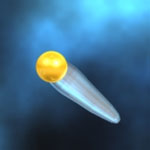 Nitrogen-doped carbon nanotubes (CNTs) have been extensively investigated for fuel cell applications due to their excellent electrocatalytic properties. However, their biomedical applications were comparatively less investigated despite reports of their better biocompatibility. When considering carbon nanotubes for drug delivery applications, it is desirable to develop strategies that allow utilize their hollow inner cavities for maximum loading capacity. Small size and facile surface modification are also preferable with regard to their biomedical compatibility. Nitrogen-doped CNTs have been already previously demonstrated to have better biocompatibility and mitigated cytotoxicity as compared to traditional undoped pristine CNTs. Taking advantage of this, researchers used nitrogen doping of CNTs which resulted in formation of cup-shaped compartments in CNTs uniquely suitable for encapsulation. The resulting nitrogen-doped carbon nanotube cups can be corked by gold nanoparticles to form enclosed nanocapsules.
Nitrogen-doped carbon nanotubes (CNTs) have been extensively investigated for fuel cell applications due to their excellent electrocatalytic properties. However, their biomedical applications were comparatively less investigated despite reports of their better biocompatibility. When considering carbon nanotubes for drug delivery applications, it is desirable to develop strategies that allow utilize their hollow inner cavities for maximum loading capacity. Small size and facile surface modification are also preferable with regard to their biomedical compatibility. Nitrogen-doped CNTs have been already previously demonstrated to have better biocompatibility and mitigated cytotoxicity as compared to traditional undoped pristine CNTs. Taking advantage of this, researchers used nitrogen doping of CNTs which resulted in formation of cup-shaped compartments in CNTs uniquely suitable for encapsulation. The resulting nitrogen-doped carbon nanotube cups can be corked by gold nanoparticles to form enclosed nanocapsules.
Aug 2nd, 2012
 Early and accurate detection of cancer is critical for successful cancer therapies. In most cases, a tissue biopsy is the initial means of making a diagnosis. With increasing accuracy, 'liquid biopsies' - where circulating tumor cells (CTCs) are isolated from blood samples - are becoming a viable complement or even alternative to invasive biopsies of metastatic tumors. CTC is of great interest for evaluating cancer dissemination, predicting patient prognosis, and also for the evaluation of therapeutic treatments. In new work, researchers describe a rapid and simple electrochemical biosensing strategy to quantify circulating tumour cells based on the simultaneous use of antibody-coated magnetic beads, which selectively bind to the cancer cells for subsequent magnetic isolation, and antibody-coated gold nanoparticles, to also selectively bind to the cancer cells for final electrochemical detection.
Early and accurate detection of cancer is critical for successful cancer therapies. In most cases, a tissue biopsy is the initial means of making a diagnosis. With increasing accuracy, 'liquid biopsies' - where circulating tumor cells (CTCs) are isolated from blood samples - are becoming a viable complement or even alternative to invasive biopsies of metastatic tumors. CTC is of great interest for evaluating cancer dissemination, predicting patient prognosis, and also for the evaluation of therapeutic treatments. In new work, researchers describe a rapid and simple electrochemical biosensing strategy to quantify circulating tumour cells based on the simultaneous use of antibody-coated magnetic beads, which selectively bind to the cancer cells for subsequent magnetic isolation, and antibody-coated gold nanoparticles, to also selectively bind to the cancer cells for final electrochemical detection.
Aug 1st, 2012
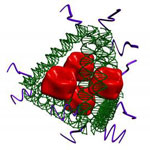 Vaccination is one of the most effective ways to prevent microbial infection. Synthetic vaccines can combine a portion of a microbe, known as an 'antigen' together with an adjuvant that stimulates the immune system. Delivering both the adjuvant and antigen to the appropriate immune cells is challenging. DNA nanotechnology may provide a solution by acting as a scaffold to co-deliver both antigen and adjuvant. However, the potential of DNA nanostructure-based vaccines has only been demonstrated in vitro. Now, a team of researchers based out of Arizona State University demonstrated that DNA nanostructures with appended adjuvants could elicit antibody production against a model antigen in mice.
Vaccination is one of the most effective ways to prevent microbial infection. Synthetic vaccines can combine a portion of a microbe, known as an 'antigen' together with an adjuvant that stimulates the immune system. Delivering both the adjuvant and antigen to the appropriate immune cells is challenging. DNA nanotechnology may provide a solution by acting as a scaffold to co-deliver both antigen and adjuvant. However, the potential of DNA nanostructure-based vaccines has only been demonstrated in vitro. Now, a team of researchers based out of Arizona State University demonstrated that DNA nanostructures with appended adjuvants could elicit antibody production against a model antigen in mice.
Jul 30th, 2012
 A major obstacle in today's chemical cancer therapies is to achieve specific drug accumulation at tumor sites and even tumor cells, because most chemotherapeutic agents are insoluble and instable, and can not differentiate between diseased and healthy cells. This often leads to severe adverse effects on healthy tissues and limits the maximum dose that can safely administered to patients. This issue becomes more serious in the case of some highly effective therapeutic agents, given that most potent anticancer drugs exhibit acute toxicity and narrow therapeutic window, and the clinical utility may not be possible without a powerful delivery systems equipped with smart properties that can allow them to precisely access the target tissues and cells. Targeted delivery approaches using nanomedicines will be able to provide solutions to these problems.
A major obstacle in today's chemical cancer therapies is to achieve specific drug accumulation at tumor sites and even tumor cells, because most chemotherapeutic agents are insoluble and instable, and can not differentiate between diseased and healthy cells. This often leads to severe adverse effects on healthy tissues and limits the maximum dose that can safely administered to patients. This issue becomes more serious in the case of some highly effective therapeutic agents, given that most potent anticancer drugs exhibit acute toxicity and narrow therapeutic window, and the clinical utility may not be possible without a powerful delivery systems equipped with smart properties that can allow them to precisely access the target tissues and cells. Targeted delivery approaches using nanomedicines will be able to provide solutions to these problems.
Jul 25th, 2012
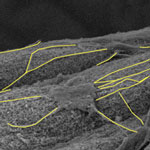 Carbon nanotubes, like the nervous cells of our brain, are excellent electrical signal conductors and can form intimate mechanical contacts with cellular membranes, thereby establishing a functional link to neuronal structures. There is a growing body of research on using nanomaterials in neural engineering. This emerging field of 'nanoneuroscience' explores and utilizes the potential of carbon nanotubes (CNTs) for fabricating durable, robust substrates, scaffolds and interfacing devices that change how researchers approach neuroscience. One area of neuron-CNT interaction that is now being probed is the effect of CNTs on neural stem cells. In new work by a team of scientists from Taiwan, it was found that electrical stimulation significantly promotes the early differentiation and maturation of neural stem cells.
Carbon nanotubes, like the nervous cells of our brain, are excellent electrical signal conductors and can form intimate mechanical contacts with cellular membranes, thereby establishing a functional link to neuronal structures. There is a growing body of research on using nanomaterials in neural engineering. This emerging field of 'nanoneuroscience' explores and utilizes the potential of carbon nanotubes (CNTs) for fabricating durable, robust substrates, scaffolds and interfacing devices that change how researchers approach neuroscience. One area of neuron-CNT interaction that is now being probed is the effect of CNTs on neural stem cells. In new work by a team of scientists from Taiwan, it was found that electrical stimulation significantly promotes the early differentiation and maturation of neural stem cells.
Jul 23rd, 2012
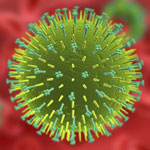 Breath analysis of exhaled breath condensate has been increasingly recognized as a promising diagnostic method to link specific gaseous components in human breath to medical conditions and exposure to chemical compounds. Sampling breath is also much less invasive than testing blood, can be done very quickly, and creates as good as no biohazard waste. Studies have shown that exhaled breath from a flu patient contains influenza viruses but, although the use of silicon nanowire (SiNW) sensors for virus detection is not new, so far no studies have been conducted to apply silicon nanowire technology to the diagnosis of flu. Now, new research suggests that a SiNW sensor device, when calibrated by virus standards and exhaled breath condensate controls, can be reliably applied to the diagnosis of flu in a clinical setting with two orders of magnitude less time compared to the gold standard method RT-qPCR.
Breath analysis of exhaled breath condensate has been increasingly recognized as a promising diagnostic method to link specific gaseous components in human breath to medical conditions and exposure to chemical compounds. Sampling breath is also much less invasive than testing blood, can be done very quickly, and creates as good as no biohazard waste. Studies have shown that exhaled breath from a flu patient contains influenza viruses but, although the use of silicon nanowire (SiNW) sensors for virus detection is not new, so far no studies have been conducted to apply silicon nanowire technology to the diagnosis of flu. Now, new research suggests that a SiNW sensor device, when calibrated by virus standards and exhaled breath condensate controls, can be reliably applied to the diagnosis of flu in a clinical setting with two orders of magnitude less time compared to the gold standard method RT-qPCR.
Jun 29th, 2012
 Many nanotechnology projects require some form of nanopatterning technique for fabricating the devices, structures and surfaces required in fields ranging from electronics to photonics, security, biotechnology and medicine. Although they may not be visible to the naked eye, the nanometer-sized trenches, ridges, curves and grooves of these patterns and surfaces have a very visible impact. Researchers have developed a wide range of nanopatterning techniques, from top-down methods such as nanoimprint, e-beam or UV lithography to bottom-up techniques such as transfer nanolithography or nanopositioning on DNA or protein scaffolds. A novel technique uses a biofunctionalization approach based on resist-less electron-beam-induced deposition of carbon-containing nanofeatures, that has been developed into a universal biofunctionalization platform. This unique ability can be exploited for biological experiments, where cells respond to the nanoscale density of activating molecules such as antibodies.
Many nanotechnology projects require some form of nanopatterning technique for fabricating the devices, structures and surfaces required in fields ranging from electronics to photonics, security, biotechnology and medicine. Although they may not be visible to the naked eye, the nanometer-sized trenches, ridges, curves and grooves of these patterns and surfaces have a very visible impact. Researchers have developed a wide range of nanopatterning techniques, from top-down methods such as nanoimprint, e-beam or UV lithography to bottom-up techniques such as transfer nanolithography or nanopositioning on DNA or protein scaffolds. A novel technique uses a biofunctionalization approach based on resist-less electron-beam-induced deposition of carbon-containing nanofeatures, that has been developed into a universal biofunctionalization platform. This unique ability can be exploited for biological experiments, where cells respond to the nanoscale density of activating molecules such as antibodies.
Jun 26th, 2012
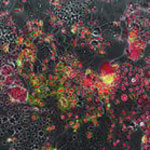 Researchers in Israel have found a unique way to affect cancer cells in a rather controllable manner. For example, they can kill these cells in various ways, or they can make them fuse together, as they like. They do so by using functionalized, 20 nm in diameter gold nanospheres and specific, intense laser pulses with a visible wavelength tuned to the plasmonic resonance of those particles. This technique may have an impact on various technologies which require sophisticated cell manipulation for therapeutic and drug development applications. What is unique about this technique is that it is highly controllable and repeatable. The structural stability of the nanospheres even after the strongest laser illumination allows them to deliver the effect over and over again, until the desired result is obtained.
Researchers in Israel have found a unique way to affect cancer cells in a rather controllable manner. For example, they can kill these cells in various ways, or they can make them fuse together, as they like. They do so by using functionalized, 20 nm in diameter gold nanospheres and specific, intense laser pulses with a visible wavelength tuned to the plasmonic resonance of those particles. This technique may have an impact on various technologies which require sophisticated cell manipulation for therapeutic and drug development applications. What is unique about this technique is that it is highly controllable and repeatable. The structural stability of the nanospheres even after the strongest laser illumination allows them to deliver the effect over and over again, until the desired result is obtained.
Jun 15th, 2012
 Nitrogen-doped carbon nanotubes (CNTs) have been extensively investigated for fuel cell applications due to their excellent electrocatalytic properties. However, their biomedical applications were comparatively less investigated despite reports of their better biocompatibility. When considering carbon nanotubes for drug delivery applications, it is desirable to develop strategies that allow utilize their hollow inner cavities for maximum loading capacity. Small size and facile surface modification are also preferable with regard to their biomedical compatibility. Nitrogen-doped CNTs have been already previously demonstrated to have better biocompatibility and mitigated cytotoxicity as compared to traditional undoped pristine CNTs. Taking advantage of this, researchers used nitrogen doping of CNTs which resulted in formation of cup-shaped compartments in CNTs uniquely suitable for encapsulation. The resulting nitrogen-doped carbon nanotube cups can be corked by gold nanoparticles to form enclosed nanocapsules.
Nitrogen-doped carbon nanotubes (CNTs) have been extensively investigated for fuel cell applications due to their excellent electrocatalytic properties. However, their biomedical applications were comparatively less investigated despite reports of their better biocompatibility. When considering carbon nanotubes for drug delivery applications, it is desirable to develop strategies that allow utilize their hollow inner cavities for maximum loading capacity. Small size and facile surface modification are also preferable with regard to their biomedical compatibility. Nitrogen-doped CNTs have been already previously demonstrated to have better biocompatibility and mitigated cytotoxicity as compared to traditional undoped pristine CNTs. Taking advantage of this, researchers used nitrogen doping of CNTs which resulted in formation of cup-shaped compartments in CNTs uniquely suitable for encapsulation. The resulting nitrogen-doped carbon nanotube cups can be corked by gold nanoparticles to form enclosed nanocapsules.
 Subscribe to our Nanotechnology Spotlight feed
Subscribe to our Nanotechnology Spotlight feed





